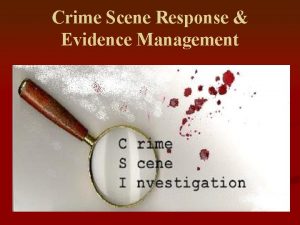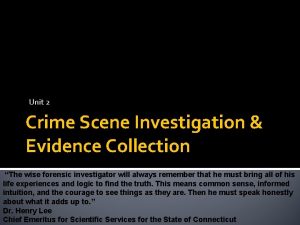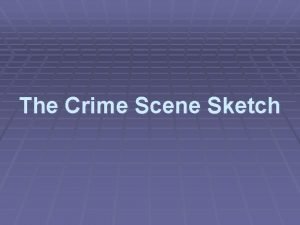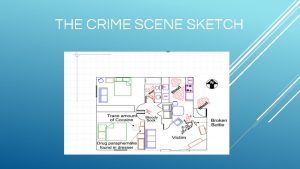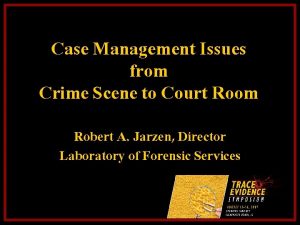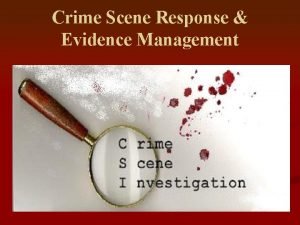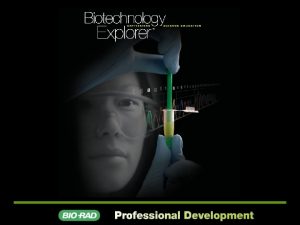Case Management Issues from Crime Scene to Court











- Slides: 11

Case Management Issues from Crime Scene to Court Room

Case Management Issues from Crime Scene to Court Room • Anne Arundel County Police Department, Maryland • Population: 510, 000 • Size : 600 square miles • PD: 700 sworn 250 civilian

Case Management Issues from Crime Scene to Court Room • • • Crime statistics: 15 murders 100 rapes 2, 500 Part 1 Violent Crimes 15, 000 Part 1 Property Crimes

Case Management Issues from Crime Scene to Court Room • Organization • Crime Lab – CDS analysis Serology/DNA • Identification Unit - Crime Scene Unit Evidence Coordinators Latent print Photo lab

Case Management Issues from Crime Scene to Court Room • “To trace, or not to trace………. ” • - Evidence coordinators make decision based upon: Type of physical evidence collected Suspect or no suspect Suspect in custody If no suspect, initial emphasis on evidence with databases (DNA & fingerprints) • Identification v. case enhancement • Relationships • Pandora’s box

Case Management Issues from Crime Scene to Court Room • Most probative results: • Trace considered during initial laboratory screening - equal footing with serology/DNA • Least probative results: • Trace analyses considered secondarily or as a “last resort” • Trace evidence since 1985: • 1985 - early 90’s MSP & FBI Labs • mid 90’s - our own Trace Unit • Currently - outsourcing

How is trace evidence viewed in our system? • Crime Lab • Prosecutors - Emphasis on DNA - No plans to bring back trace examiner position - Preferred trace evidence - Moved towards DNA - Juries expectations shift emphasis back to trace - Hair comparison with mt. DNA • Investigators - Prefer database-type evidence - Greater emphasis on forensic sciences • Juries - Can’t get enough! - If you collected it, why didn’t you analyze it?

Scenario #1: A murder Female victim found on the shoulder of a highway Ligature strangulation Partially clothed with possible sexual assault • Scene Examinations (a. k. a. • • whatever we can get away with) Search body w/UV and ALS Collection of extraneous hairs/fibers Latents from body Trace evidence vacuum Inkless fingerprints/ fingernail scrapings Wrap body in sheet Soil/vegetation standards • Autopsy Examinations • • Visible exam Sexual Assault Kit Head and pubic hair combings Fingernail scrapings Collect standards Collect clothing Collect sheet for trace

Scenario #1: A murder Female victim found on the shoulder of a highway Ligature strangulation Partially clothed with possible sexual assault • Laboratory submissions • Sexual assault kit and clothing to Serology/DNA • Combings and any extraneous collections/vacuumings directly to Trace with victim’s standards • Trace Examinations • Investigative - initial examinations to identify hairs/fibers foreign to victim that may establish perimortem environment • Comparative – eventual examination with knowns/unknowns from suspect(s)

Scenario #2: Vehicle recovered from a carjacking two male subjects fitting the description of the carjackers used the vehicle during an armed robbery of retail establishment 1 hour later • Vehicle examinations • • • Usual search and processing for physical evidence Collect hairs/fibers individually or vacuum GSR collections, if appropriate Latent prints interior/exterior surfaces (swab steering wheel-DNA) Collect standards Suspects - collection of knowns/unknowns

Conclusions • More comprehensive training of Serology / DNA analysts • Shift back to the collection and analysis of trace evidence, driven by: - Jury expectations - Realization that there ARE limitations to DNA - Hair comparisons confirmed with mt. DNA - Technological advances
 Crime scene
Crime scene Is there a basketball court above the supreme court
Is there a basketball court above the supreme court Best case worst case average case
Best case worst case average case West memphis 3 autopsy photos
West memphis 3 autopsy photos The seven s's
The seven s's Types of crime scene
Types of crime scene Margaret schlosser pictures
Margaret schlosser pictures What are the three methods of crime scene recording
What are the three methods of crime scene recording Cross-projection method
Cross-projection method What is cross projection sketch
What is cross projection sketch Crime scene factoring and quadratic functions answer key
Crime scene factoring and quadratic functions answer key Crime scene rough sketch
Crime scene rough sketch
